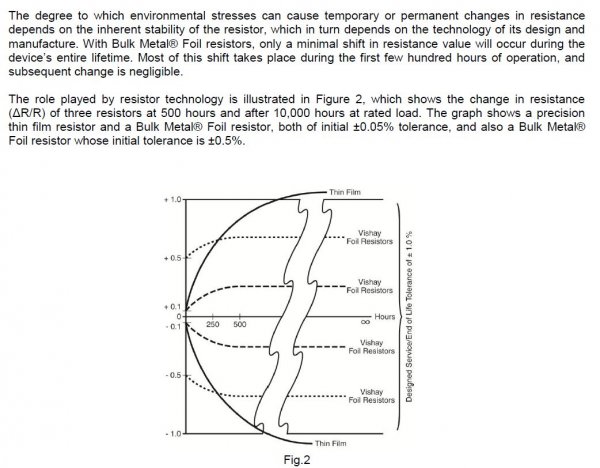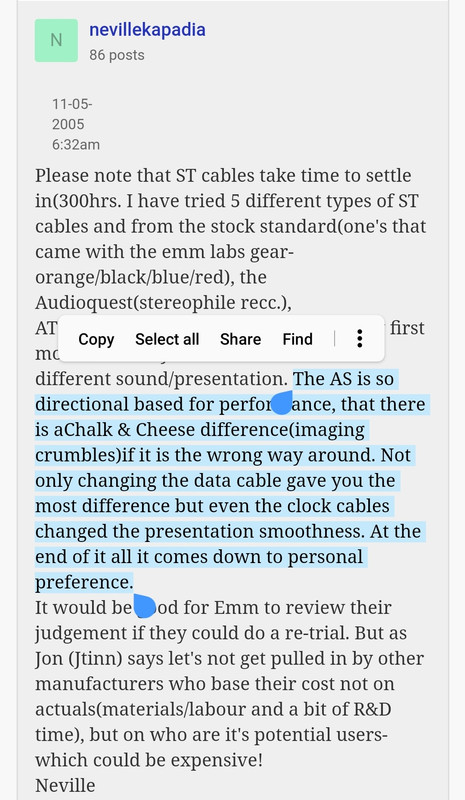G'day maties, greetings from down.
This is a very interesting topic, although discussed several times, arriving at different answers and points of view, I think at the end of the day it settles towards one's own level of perception as to what point their system reaches optimisation.
A few decades ago I believed in a few hours of burn-in but not hundreds of hours... Back then my system was quite different to what it's now, however there was obviously a certain duration of warm up required, especially with Tubes and Stats or full range panels such as Apogee Diva's and Maggie's.
Over a period of two years, I gradually upgraded the CJ monoblocks starting with an output tube change over, then a Teflon cap change over, then onto a further Teflon cap full layout and a full Vishay resistor change over, that was finalised only this Feb. When the amplifiers got back, things sounded great and they were nicely settling in. However, JF at CJ mentioned that I've not heard anything yet, and wait for the 100hr mark or so... and so I did.
Wow, oh my goodness! Stop the train! Just had that moment only today, and so it took from Feb to mid May to settle in. I was initially explaining this to the good wife in Feb and she just laughed, thinking I was completely nuts. Then this evening, she wanted to listen to a few tunes from Cassandra Wilson, Sting and Jessica Williams on piano. So I popped in the CDs and hit play, hold onto your seats maties! This thing just shifted several gears, as if a dynamic acceleration from 0 to 100 happened in few seconds, lighting fast transients, extended airy highs, an even more palpable midrange and bullet speed bass with definition and superb agility. The soundstage depth increased even further on the CLX's, and I asked her, now what she thinks? Her reply, "as if you're there with the musicians seated right in the middle!" And that's all she wrote!
I'm not sure exactly what it is or how it happens but there's definitely something towards the overall burn-in process. Now according to JF, he claims that CJ's Teflons don't deteriorate over time, rather they only improve. I'm not too sure about that but all I know is that they take an awful long time to really settle in, and the biggest most significant change in overall performance are those Vishays. Each monoblock has about a dozen of them, and once these settle in, the performance is just on another dimension! You really have to experience it to know what I'm referring to.
Nothing I've ever owned in the past comes this close, not even CJ's previous top of the line monoblocks Premier 8A, which I owned driving the Diva's. However, CJ's current top of the line ART amplifiers embody this kind of performance. Teflons and Vishays are a full layout in each of these amplifiers and they come at a high cost.
Another reason why I brought this up, is that my CJ phonostage the TEA2SE, also has more than a dozen Teflons and Vishays in it as well, and this thing took several months towards optimal performance. There was another chap on CJO who had just ordered the same SE phono-preamp version but was underwhelmed by its performance, stating that it had lost some LF detail. He checked with CJ and JF had advised not to worry, give it plenty of time and things will change dramatically. Well I guess he's still burning in because we haven't heard anything from him yet...
So, at the end of the day, I guess there's some science and truth towards it but I'm still not sure why the 100hr mark. There are other brands that require far more than just 100hrs, and go to lengths of several 100hrs... I'm not sure about such claims.
One thing I'm sure about is that CJ's ART300's won amplifiers of the year awards, plus a few other units, such as the ART150, the CAV45 and ART27A have all been truly remarkable, given what they have to offer. I guess JF has his reasons. So cheers to Teflons and those Vishays, they're mighty fine indeed! In a class of their own.
Big WOOF! RJ




